Potřebujeme váš souhlas k využití jednotlivých dat, aby se vám mimo jiné mohly ukazovat informace týkající se vašich zájmů. Souhlas udělíte kliknutím na tlačítko „OK“.
ASTM D257-14
Standard Test Methods for DC Resistance or Conductance of Insulating Materials
Automaticky přeložený název:
Standardní zkušební metody pro DC odporu nebo vodivosti izolačních materiálů
NORMA vydána dne 1.4.2014
Informace o normě:
Označení normy: ASTM D257-14
Poznámka: NEPLATNÁ
Datum vydání normy: 1.4.2014
Kód zboží: NS-20769
Počet stran: 18
Přibližná hmotnost: 54 g (0.12 liber)
Země: Americká technická norma
Kategorie: Technické normy ASTM
Kategorie - podobné normy:
Anotace textu normy ASTM D257-14 :
Keywords:
DC resistance, insulation resistance, surface resistance, surface resistivity, volume resistance, volume resistivity, ICS Number Code 29.035.01 (Insulating materials in general)
Doplňující informace
| Significance and Use | ||||||||||||||||
|
5.1 Insulating materials are used to isolate components of an electrical system from each other and from ground, as well as to provide mechanical support for the components. For this purpose, it is generally desirable to have the insulation resistance as high as possible, consistent with acceptable mechanical, chemical, and heat-resisting properties. Since insulation resistance or conductance combines both volume and surface resistance or conductance, its measured value is most useful when the test specimen and electrodes have the same form as is required in actual use. Surface resistance or conductance changes rapidly with humidity, while volume resistance or conductance changes slowly with the total change being greater in some cases. 5.2 Resistivity or conductivity is used to predict, indirectly, the low-frequency dielectric breakdown and dissipation factor properties of some materials. Resistivity or conductivity is often used as an indirect measure of: moisture content, degree of cure, mechanical continuity, or deterioration of various types. The usefulness of these indirect measurements is dependent on the degree of correlation established by supporting theoretical or experimental investigations. A decrease of surface resistance results either in an increase of the dielectric breakdown voltage because the electric field intensity is reduced, or a decrease of the dielectric breakdown voltage because the area under stress is increased. 5.3 All the dielectric resistances or conductances depend on the length of time of electrification and on the value of applied voltage (in addition to the usual environmental variables). These must be known and reported to make the measured value of resistance or conductance meaningful. Within the electrical insulation materials industry, the adjective “apparent” is generally applied to resistivity values obtained under conditions of arbitrarily selected electrification time. See 5.4 Volume resistivity or conductivity is calculated from resistance and dimensional data for use as an aid in designing an insulator for a specific application. Studies have shown changes of resistivity or conductivity with temperature and humidity 5.5 Volume resistivities above 1021 Ω·cm (1019 Ω·m), calculated from data obtained on specimens tested under usual laboratory conditions, are of doubtful validity, considering the limitations of commonly used measuring equipment. 5.6 Surface resistance or conductance cannot be measured accurately, only approximated, because some degree of volume resistance or conductance is always involved in the measurement. The measured value is also affected by the surface contamination. Surface contamination, and its rate of accumulation, is affected by many factors including electrostatic charging and interfacial tension. These, in turn, affect the surface resistivity. Surface resistivity or conductivity is considered to be related to material properties when contamination is involved but is not a material property of electrical insulation material in the usual sense. |
||||||||||||||||
| 1. Scope | ||||||||||||||||
|
1.1 These test methods cover direct-current procedures for the measurement of dc insulation resistance, volume resistance, and surface resistance. From such measurements and the geometric dimensions of specimen and electrodes, both volume and surface resistivity of electrical insulating materials can be calculated, as well as the corresponding conductances and conductivities. 1.2 These test methods are not suitable for use in measuring the electrical resistance/conductance of moderately conductive materials. Use Test Method D4496 to evaluate such materials. 1.3 This standard describes several general alternative methodologies for measuring resistance (or conductance). Specific materials can be tested most appropriately by using standard ASTM test methods applicable to the specific material that define both voltage stress limits and finite electrification times as well as specimen configuration and electrode geometry. These individual specific test methodologies would be better able to define the precision and bias for the determination. 1.4 This standard does not purport to address all of the safety concerns, if any, associated with its use. It is the responsibility of the user of this standard to establish appropriate safety and health practices and determine the applicability of regulatory limitations prior to use. |
||||||||||||||||
| 2. Referenced Documents | ||||||||||||||||
|
Podobné normy:
Historická
1.3.2013
Historická
1.1.2012
Historická
1.11.2013
Historická
15.5.2014
Historická
1.10.2010
Historická
1.1.2012
Doporučujeme:
Aktualizace technických norem
Chcete mít jistotu, že používáte pouze platné technické normy?
Nabízíme Vám řešení, které Vám zajistí měsíční přehled o aktuálnosti norem, které používáte.
Chcete vědět více informací? Podívejte se na tuto stránku.


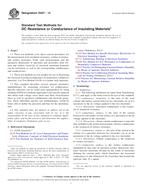
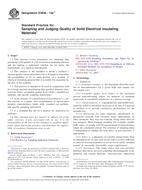 ASTM D3636-13ae1..
ASTM D3636-13ae1..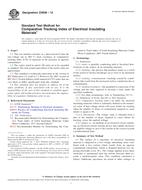 ASTM D3638-12
ASTM D3638-12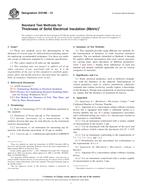 ASTM D374M-13
ASTM D374M-13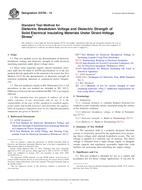 ASTM D3755-14
ASTM D3755-14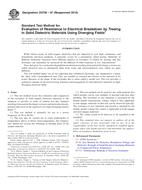 ASTM D3756-97(2010)..
ASTM D3756-97(2010)..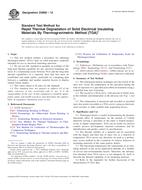 ASTM D3850-12
ASTM D3850-12
 Cookies
Cookies
